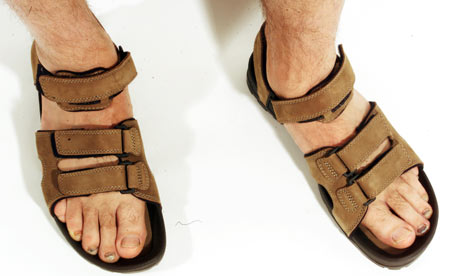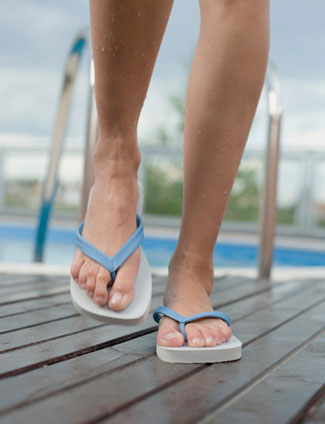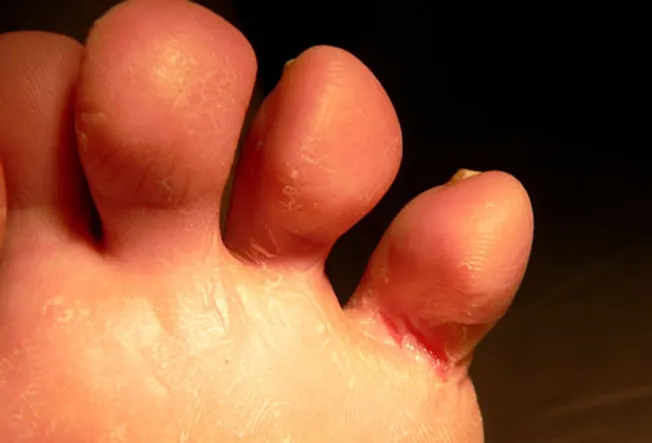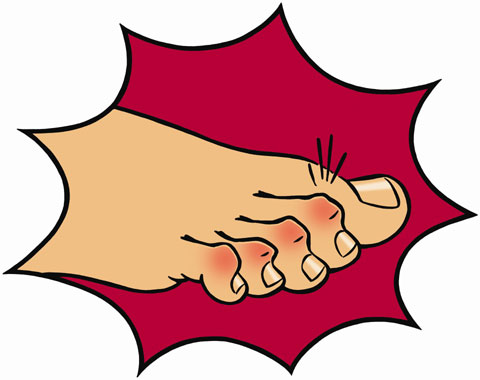What are Skin Cancers of the Feet?
Skin cancer can develop anywhere on the body, including in the lower extremities. Skin cancers of the feet have several features in common. Most are painless, and often there is a history of recurrent cracking, bleeding, or ulceration. Frequently, individuals discover their skin cancer after unrelated ailments near the affected site.
Causes
We often view the sun’s harmful rays as the primary cause of skin cancer, due to the fact that the condition is often found on parts of the body that receive the most sun exposure. While this may be true of some bodily skin cancers, it does not hold true for those that arise on the skin of the feet. Skin cancers of the feet are more often related to viruses, exposure to chemicals, chronic inflammation or irritation, or inherited traits. Unfortunately, the skin of the feet is often overlooked during routine medical examinations, and for this reason, it important that the feet are checked regularly for abnormalities which might be indicative of evolving skin cancer.
Types and Symptoms
Some of the most common cancers of the lower extremity are:
Basal Cell Carcinoma: Basal cell carcinoma frequently is seen on sun-exposed skin surfaces. With feet being significantly less exposed to the sun, it occurs there less often. This form of skin cancer is one of the least aggressive cancers in the body. Basal cell cancers may appear as pearly white bumps or patches that may ooze or crust and are similar in appearance to an open sore. On the skin of the lower legs and feet, basal cell cancers often resemble non-cancerous skin tumors or benign ulcers.
Squamous Cell Carcinoma: Squamous cell carcinoma is the most common form of cancer on the skin of the feet. Most types of early squamous cell carcinoma are confined to the skin and do not spread. However, when advanced, some can become more aggressive and spread throughout the body. This form of cancer often begins as a small scaly bump or plaque, which may appear inflamed. Sometimes there is a history of recurrent cracking or bleeding. Occasionally, it begins as a hard, projecting, callus-like lesion. Though squamous cell cancer is painless, it may be itchy. Squamous cell cancer may resemble a plantar wart, a fungal infection, eczema, an ulcer, or other common dermatological conditions of the foot.
Malignant Melanoma: Malignant melanoma is one of the deadliest skin cancers known. Nonsurgical treatments are rarely effective and many remain experimental. This type of skin cancer must be detected very early to ensure patient survival. Melanomas may occur on the skin of the feet and on occasion beneath a toenail. They are found both on the soles and on the top of the feet. As a melanoma grows and extends deeper into the skin, it becomes more serious and may spread through the body through the lymphatics and blood vessels.
When to Visit a Podiatrist
Learn the ABCDs of cancer. If you notice a mole, bump, or patch on the skin that meets any of the following criteria, see a podiatrist immediately:
•Asymmetry - If divided in half, the sides don't match
•Borders - They look scalloped, uneven, or ragged
•Color - They may have more than one color. These colors may have an uneven distribution
•Diameter - They can appear wider than a pencil eraser (greater than 6 mm). For other types of skin cancer, look for spontaneous ulcers and non-healing sores, bumps that crack or bleed, nodules with rolled or "donut-shaped" edges, or discrete scaly areas
Diagnosis and Treatment
The investigation for skin cancer will be done through clinical examination and skin and/or punch biopsy. A skin biopsy is a simple procedure in which a small sample of the skin lesion is obtained and sent to a specialized laboratory where a skin pathologist examines the tissue in greater detail. If a lesion is determined to be malignant, your podiatrist will recommend the best course of treatment for your condition.
If you or someone you know has a questionable lesion, please give the office, 440-946-5858, for further evalaution and treatment.
Informatoin provided above can be found at APMA and/or BAKO Labs.
 Footwear has come a long way since Roman armies conquered an empire wearing only sandals on their feet. But what’s old is new again. Recent market research reveals sales of men’s sandals jumped 20 percent between 2005 and 2007.
Footwear has come a long way since Roman armies conquered an empire wearing only sandals on their feet. But what’s old is new again. Recent market research reveals sales of men’s sandals jumped 20 percent between 2005 and 2007.




